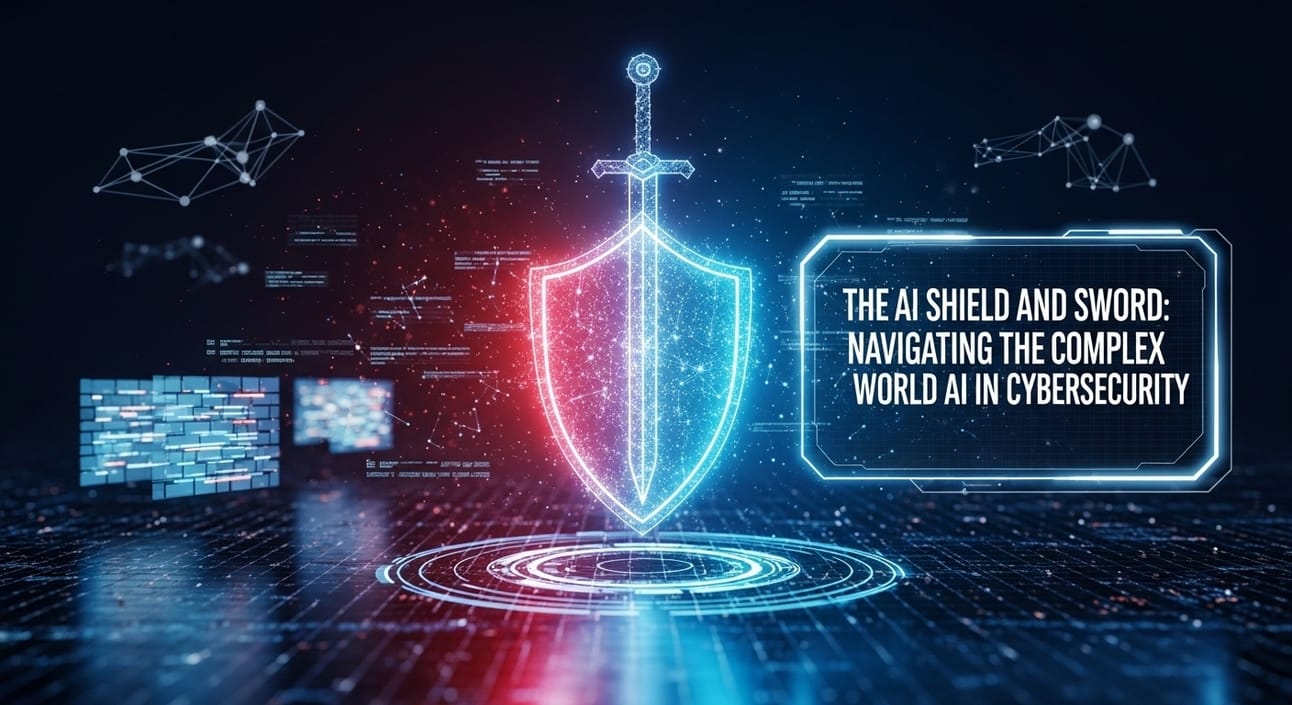- Digital Brain
- Posts
- The AI Shield and Sword: Navigating the Complex World of AI in Cybersecurity
The AI Shield and Sword: Navigating the Complex World of AI in Cybersecurity

Hello, Digital Brain reader!
We've explored how AI is reshaping industries, redefining creativity, and even becoming a personal co-pilot in our daily lives. Today, we delve into a critical domain where the stakes are incredibly high: cybersecurity. As our world becomes increasingly digital, the battle for data integrity, privacy, and system resilience intensifies. Artificial Intelligence is emerging as both a powerful shield for defense and a sophisticated sword for attack, creating a complex and ever-evolving digital battleground. How is your "Digital Brain" preparing for this intelligent war?
AI as the Digital Shield: Enhancing Defense
Cybersecurity teams are constantly overwhelmed by the sheer volume and sophistication of threats. AI offers a much-needed advantage by bringing speed, scale, and predictive power to defense mechanisms:
Advanced Threat Detection: AI algorithms can analyze vast amounts of network traffic, user behavior, and system logs in real-time to identify anomalies, zero-day exploits, and sophisticated malware that might evade traditional signature-based detection systems. They learn what "normal" looks like and flag deviations.
Automated Incident Response: Once a threat is detected, AI can initiate rapid, automated responses, such as isolating infected systems, blocking malicious IP addresses, or quarantining suspicious files, significantly reducing the time attackers have to cause damage.
Vulnerability Management: AI can scan codebases and network configurations to identify potential vulnerabilities before they are exploited, helping organizations proactively patch weaknesses.
Predictive Security: By analyzing historical attack data and global threat intelligence, AI can predict future attack vectors and potential targets, allowing security teams to fortify defenses preemptively.
Phishing and Spam Filtering: AI is highly effective at identifying and blocking sophisticated phishing attempts and spam, protecting users from social engineering attacks.
AI as the Digital Sword: Fueling Attacks
Unfortunately, the same intelligence that protects can also be weaponized. Malicious actors are increasingly leveraging AI to launch more potent and evasive attacks:
Automated Malware Generation: AI can be used to create polymorphic malware that constantly changes its code, making it harder for antivirus software to detect.
Sophisticated Phishing and Social Engineering: AI-powered tools can generate highly personalized and convincing phishing emails, voice calls (voice cloning), and deepfake videos, making it incredibly difficult for individuals to discern legitimate communications from fraudulent ones.
Bypassing Defenses: Adversarial AI techniques can be used to trick AI-powered security systems, making them misclassify malicious activity as benign or vice versa.
Autonomous Hacking: While still largely theoretical, the concept of AI agents autonomously discovering and exploiting vulnerabilities without human intervention is a growing concern.
Botnets and DDoS Attacks: AI can orchestrate massive botnets for distributed denial-of-service (DDoS) attacks, overwhelming targets with traffic.
The AI Arms Race: An Ever-Escalating Battle
The interplay between AI for defense and AI for offense creates a continuous "arms race." As defenders deploy more intelligent systems, attackers respond with more sophisticated AI-driven tactics, leading to a constant escalation. This dynamic demands continuous innovation and vigilance from cybersecurity professionals.
Challenges and the Human Element
Despite AI's power, challenges remain:
Adversarial Attacks on AI: AI models themselves can be targets. Attackers can "poison" training data or craft inputs that cause the AI to make incorrect decisions.
Explainability: The "black box" nature of some AI models can make it difficult for human analysts to understand why a threat was flagged, hindering investigation and response.
Ethical Implications: The potential for autonomous cyber warfare raises profound ethical questions about control, accountability, and escalation.
Ultimately, while AI is an indispensable tool, the human element remains crucial. Cybersecurity professionals are needed to strategize, interpret AI outputs, respond to novel threats, and develop the next generation of intelligent defenses. The "Digital Brain" in cybersecurity is a powerful partnership between human ingenuity and artificial intelligence.
Staying informed about these evolving threats and defenses is paramount in our increasingly connected world.
Stay secure, stay intelligent, and see you in the next edition!
Sincerely,
The Digital Brain Team